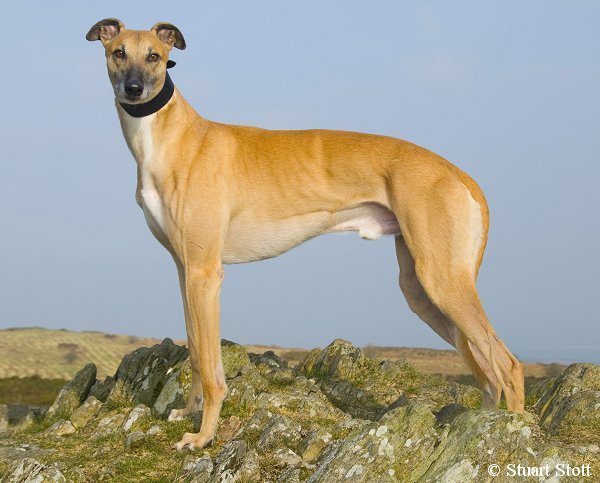
The Breed History
Greyhounds are ancient sight or "gaze" hounds originating from the
Egyptian Sloughi lines that were brought to England about 900 AD.
Early origins trace back to 3000-5000 BC in the Middle East (Egypt).
They are considered both the oldest and fastest breed of dog.
They were registered in the AKC by the time of the second breed
standards edition in 1855.
Breeding for Function
This breed was originally developed to accompany mounted hunters
primarily for coursing hares. They were also used to hunt stag, fox,
wild boar and gazelle. Also termed a "gazehound", their keen vision
and exceptional speed allowed them to be an effective hunting
partner. The most popular use for this dog in modern times is as
a racing dog. There are two modern sub-types in the breed; show
and racing. The show dog is a slightly heavier conformation, but the
temperament is the same.
Physical Characteristics
Height at Withers: female 27-28" (68-71 cm), male 28-30"
(70-76 cm)
Weight: females 60-65 lb (27-29 kg), males 65-70 (29-32 kg).
Coat: The short fine haircoat is set close to the skin surface and
colors include brindle, fawn, black, white, red, and blue.
Longevity: 10-12 years.
Conformation Points: This muscular, highly athletic dog has a long,
flat, medium weight skull with a slight stop (dolichocephalic skull),
dark eyes, small fine partially upright ears, a long muscular neck,
very deep chest and well-sprung rib cage, with moderately arched
loins and a thin waist. They have fine-boned long limbs, with small
compact feet well knuckled up, and carry their long tapering thin
tail low.
Recognized Behavior Issues and Traits
The greyhound is known to be a very affectionate dog; gentle, but
somewhat cautious around strangers. In the home environment,
it requires a low to average amount of exercise only, but outdoors
enjoys a good free run. It has a strong chase instinct, and this
should be kept in mind when around other (smaller) pets and
children. The coat needs very little care. They enjoy close human
companionship, though they are not known to be one-man dogs.
Training progresses quickly, but they are easily bored, so a variety
of tasks is important. They think well for themselves and therefore
work well independently. They may try to greet friends by jumping
up and hugging, and tend to sneak off with favorite household
items. Yards should be fenced if they are let outside off leash.
Normal Physiologic Variations
Echocardiographic Normal Values:
Parameter Median +/- S.D.
Weight (kg) - 20.7-32.5
LVPWD (mm) - 12.1 +/- 1.7
LVPWS (mm) - 15.2 +/- 2.2
LVD (mm) - 44.1 +/- 3.0
LVS (mm) - 32.5 +/- 3.5
FS (%) - 25.4 +/- 6.3
IVSd (mm) - 10.6 +/- 1.7
IVSs (mm) - 13.4 +/- 2.5
N - 16
LVPWD, LV posterior wall dimension at end-diastole; LVPWS, LV
posterior wall thickness at end-systole; LVD, LV chamber dimension
at end-diastole; LVS, LV chamber dimension at end-systole;
FS, percent fractional shortening; IVSd, interventricular septal
thickness at end-diastole; IVSs, interventricular septal thickness at
end-systole; N, number of animals.
Another Study (Echocardiographic values without sedation):2 IVSd
(mm): 10-16, LVIDd (mm): 40-50, LVIDs (mm): 28-36, LVWd (mm):
8-13, FS%: 24-37, Vcf (Circ/sec): 1.2-2.2
Vertebral Heart Size (VHS) is larger than in other breeds, with a
mean of 10.5 +/- 0.1 on a lateral radiograph.
A soft (1-2/6) Left Basilar Systolic Murmur is identified in a
majority of Greyhounds. It is associated with an increased aortic
velocity, and is not related to heart disease.
Normal Systemic Blood Pressure Values are about 20 mmHg
higher than other breeds. Normal range for hematocrit varies with
geographic location, but is generally between 50-65%. This range is
higher than for many breeds.
Up to 26% of all Greyhounds with normal blood clotting
parameters can show excessive bleeding after injury or surgical
procedures. This is due to weaker clot strength (kinetics) and
increased fibrinolysis in the breed.
Thyroid Values: Greyhounds, as with all sight hounds, have lower
normal ranges for T4 and T3 concentrations compared to other
breeds. The following are average values:
T4: 13.9 +/- 6.3 nmol/L
fT4: 11.6 +/- 6.5 pmol/L
cTSH: 0.20 +/- 0.21 ng/ml
T4 after TSH admin: 36.4 +/- 10 nmol/L
fT4 after TSH admin: 16.7 +/- 7.2 pmol/L
Greyhounds have higher normal creatinine levels than
non-Greyhounds, with a mean of 1.6 mg/dL (range 1.2-1.9 mg/dL).
Drug Sensitivities
Anesthesia: Sight hounds require particular attention during
anesthesia. Their lean body conformation with high surface-areato-
volume ratio predisposes them to hypothermia during
anesthesia. Impaired biotransformation of drugs by the liver
results in prolonged recovery from barbiturate and thiobarbiturate
intravenous anesthetics.
Deficient hydroxylation of propofol by hepatic cytochrome
P-450 isoforms may contribute to slow clearance of propofol by
greyhounds.
Inherited Diseases
Hip Dysplasia: Polygenically inherited trait causing degenerative
joint disease and hip arthritis. OFA reports 2.1% affected. Reported
at a frequency of 0.6% in a web-based Greyhound health survey.11,12
Elbow Dysplasia: Polygenically inherited trait causing elbow
arthritis. Too few Greyhounds have been evaluated by OFA to
determine an accurate frequency.
Patella Luxation: Polygenically inherited trait causing stifle
instability and arthritis. Too few Greyhounds have been evaluated
by OFA to determine an accurate frequency.
Polyneuropathy: A rare, autosomal recessive polyneuropathy
presenting with progressive weakness and gait abnormalities
between 3 and 9 months of age is identified in conformation
Greyhounds. Pathology reveals mild to marked reduction in nerve
fiber density, axonal swelling, and secondary muscle atrophy. The
disease is caused by a mutation in the NDRG1 gene. Limited testing
did not reveal the mutation in racing Greyhound lines. A direct
genetic test is available.
Disease Predispositions
Supernumerary Teeth: One study found a 36.4% incidence of
supernumerary teeth; most often maxillary first premolars.
Periodontal Disease: Dorn reports a 8.95x odds ratio for developing
periodontal disease versus other breeds.
Osteoarthritis: Degenerative joint disease accompanied by pain
and lameness. Treat with anti-inflammatory drugs. Reported at a
frequency of 17.5% in a web-based Greyhound health survey.
Cataracts: Posterior cortex imtermediate and anterior cortex
punctate cataracts predominate in the breed. Reported at a
frequency of 17% in a survey of retired racing Greyhounds.
Identified in 5.43% of Greyhounds CERF-examined by veterinary
ophthalmologists between 2000-2005. CERF Does not recommend
breeding any Greyhound with a cataract.
Thigh Alopecia: As Greyhounds age, they are prone to symmetrical
alopecia over their thigh areas. Reported at 20% in a pathological
study of Greyhounds. Reported at a frequency of 16.3% in a
web-based Greyhound health survey.
Endocardiosis (Mitral Valvular Disease): A pathological study of
deceased Greyhounds found that 10.4% had signs of endocardiosis
or mitral valvular thickening. No correlation to clinical signs or
heart disease were available. Heart murmers were reported at a
frequency of 5.3% in a web-based Greyhound health survey.
Vitreous Degeneration: Liquefaction of the vitreous gel which
may predispose to retinal detachment. Reported at a frequency of
31% in a survey of retired racing Greyhounds. Identified in 3.42%
of Greyhounds CERF-examined by veterinary ophthalmologists
between 2000-2005. CERF does not recommend breeding any
Greyhound with the condition.
Chronic Glomerulonephritis: Chronic kidney diease was identified
microscopically on necropsy of 6.9% of Greyhounds in one study,
however it was found in 64% of those over 7.5 years of age. No
correlation to clinical disease or azotemia was investigated. Dorn
reports a 5.42x odds ratio for kidney disease versus other breeds.
Osteosarcoma: Malignant bone cancer, usually affecting the limbs.
Reported at a frequency of 5.9% in a web-based Greyhound health
survey. The proximal humerus was the most frequent location,
with the distal radius, proximal tibia, distal tibia, distal femur, and
proximal femur the other locations reported. Another study showed
a frequency of 6.2% with an average age of 9.9 years.
Digital Keratoma (Corns): Greyhounds have a predilection
to forming footpad corns, which are painful, hard keratin
accumulations in the deep dermis and epidermis. There is a male
predilection with over 90% affecting digits 3 or 4 in the thoracic
limbs. Remove when identified. Reported at a frequency of 5.9% in
a web-based Greyhound health survey.
Allergic Dermatitis: Inhalant or food allergies. Presents with
pruritis and pyotraumatic dermatitis (hot spots). Inhalant allergy
was reported at 1.4% and food allergy at 5.5% in a web-based
Greyhound health survey.
Cardiac Arrhythmias: In racing Greyhounds, maximal sprinting
increases the incidence of cardiac arrhythmias during the early
recovery period: mainly sinus tachycardia, ventricular extrasystoles,
ventricular tachycardia, and electrical alternans.
Progressive Retinal Atrophy (PRA)/Retinal Degeneration:
Undetermined mode of inheritance. PRA in the greyhound may
begin as early as 12 months of age, and affected dogs may progress
to complete blindness at a relatively young age. Nyctalopia (night
blindness) is not an initial finding in affected Greyhounds. Reported
at a frequency of 4% in a survey of retired racing Greyhounds. CERF
does not recommend breeding any Greyhound with PRA.
Chronic Superficial Keratitis (Pannus): A chronic corneal
inflammatory process that can cause vision problems due to
corneal pigmentation. Treatment with topical ocular lubricants and
anti-inflammatory medication. One study found Greyhounds to be
a breed at increased risk. Reported at a frequency of 4% in a survey of retired racing Greyhounds. Identified in 4.11% of Greyhounds
CERF-examined by veterinary ophthalmologists between
2000-2005. CERF does not recommend breeding any Greyhound
with pannus.
Sesamoid Disease: Greyhounds (especially racing Greyhounds) can
develop acute to chronic forelimb lameness due to fragmentation
of the 2nd and 7th metacarpophalangeal sesamoid bones, with
secondary degenerative joint disease. One study showed that a
reduction in number of vascular foramina is correlated to increased
risk for the disease.
Central Tarsal Bone Fracture: Racing Greyhounds can develop
factures of the central tarsal bone secondary to accumulation and
coalescence of branching arrays of fatigue microcracks. This may
occur more frequently in the right hind limb; the outside limb
when racing.
Otitis Externa (Chronic Ear Infections): Can also be secondary to
allergic skin disease. Bacterial, yeast, or mixed infection. Reported at
a frequency of 2.5% in a web-based Greyhound health survey.
Inflammatory Bowel Disease (IBD): An immune mediated disorder
presenting as gastrointestinal inflammation and irritation. It can
present with vomiting, diarrhea, or weight loss. Affected dogs can
usually be controlled with diet and/or medications. Reported at a
frequency of 2.4% in a web-based Greyhound health survey.
Idiopathic Epilepsy (Inherited Seizures): Can be generalized or
partial seizures. Control with anti-seizure medication. Reported at a
frequency of 2.4% in a web-based Greyhound health survey.
Lumbosacral Stenosis/Cauda Equina Syndrome: Narrowing of the
bony canal at the end of the spinal cord, can cause pain, ataxia, and
progressive neurological impairment. Reported at a frequency of
2.0% in a web-based Greyhound health survey.
Intervertebral Disc Disease (IVDD): Spinal cord disease due to
prolapsed disk material. Clinical signs include back pain, scuffing
of paws, spinal ataxia, limb weakness, and paralysis. Reported at a
frequency of 2.0% in a web-based Greyhound health survey.
Symmetrical Lupoid Onychodystrophy (SLO): Disorder causing
loss of toenails. Onset between 2-8 years of age affecting 1-2 nails,
then progressing to all toenails within 2-9 weeks. Requires lifelong
treatment with oral fatty acid supplementation +/- prednisone.
Reported at a frequency of 1.8% in a web-based Greyhound health
survey.
Hypothyroidism: Inherited autoimmune thyroiditis. 1.7% positive
for thyroid autoantibodies based on testing at Michigan State
University. (Ave. for all breeds is 7.5). Reported at a frequency of
11% in a web-based Greyhound health survey.
Babesiosis: Greyhounds comprise a significant percentage of dogs
seropositive for Babesia canis vogeli. Reported at a frequency
of 2.6% in a web-based Greyhound health survey. Greyhounds
presenting with immune-mediated hemolytic anemia or
thrombocytopenia should be screened for babesiosis.
Primary Lens Luxation: Often progresses to secondary glaucoma.
Identified in 1.37% of Greyhounds CERF examined by veterinary
ophthalmologists between 2000-2005. CERF does not recommend
breeding any Greyhound with lens luxation.
Cranial Cruciate Ligament (ACL) Rupture: Traumatic tearing
of the ACL in the stifle, causing lameness and secondary arthritis.
Treat with surgery. Reported at a frequency of 1.1% in a web-based
Greyhound health survey.
Lymphoma/Lymphosarcoma: Malignant cancer of lymphoid tissue.
Can be B-cell or T-cell (mycosis fungoides) disease. Reported at a
frequency of 1.1% in a web-based Greyhound health survey.
Hemangiosarcoma: A malignant cancer of red blood cells, usually
involving the spleen, liver, heart, or bone marrow. Greyhounds are
found to be at increased risk of developing visceral and non-visceral
hemangiosarcomas and hemangiomas versus other breeds.
Reported at a frequency of 1.1% in a web-based Greyhound health
survey.
Cutaneous and Renal Glomerular Vasculopathy (CRGV)
(Alabama Rot): A vascular disease of unknown etiology affecting
the skin and kidneys of racing Greyhounds. Affected dogs can
present with symptoms of cutaneous ulcers of the extremities,
thrombocytopenia, and in advanced cases acute renal insufficiency.
There is no evidence of infectious or immune-complex disease
in the pathogenesis. Prognosis for recovery is poor if azotemia is
present.
Juvenile Endocrine and Exocrine Pancreatic Atrophy: Several
cases of Greyhounds with compound failure of the endocrine and
exocrine pancreas have been identified. Cases range from 4 weeks
to 18 months of age, with a median of 12 weeks. Clinical signs are
typical for both endocrine and exocrine diseases. Pathology reveals
acinar cell apoptosis, zymogen granule loss, cytoplasmic clearing
or vacuolar change, lobular atrophy, islet loss, and lymphocytic or
lymphoplasmacytic pancreatitis.
Greyhound Meningoencephalitis: Rare, non-suppurative
meningoencephalitis primarily affecting young greyhounds
between 4-18 months of age. Affected dogs develop either acute or
insidious neurological signs including head tilting, circling, ataxia,
recumbency and blindness. Pathological changes include cerebral
cortex perivascular cuffing and gliosis. Gene expression studies
identify an autoimmune pathogenesis. There is no treatment.
Malignant Hyperthermia: Exercise and anesthesia induced
malignant hyperthermia is reported in isolated Greyhound
cases.
Renal Arteriosclerosis: Endothelial damage to the renal arteries
due to hemodynamic forces of sheer stress and pressure pulse
velocity is identified in young, race-trained Greyhounds. Correlation
to later kidney disease is not determined.
Brachygnathism, Cryptorchidism, Factor VIII Deficiency, Gastric
Dilation/Volvulus, Megaesophagus, Optic Nerve Hypoplasia,
Osteochondritis Dessicans of the stifle and shoulder, Spina
Bifida, and von Willebrand's disease are reported.
Isolated Case Studies
Acute B cell Lymphoblastic Leukaemia: A 12 week old Greyhound
with lethargy, inappetence, shifting lameness, pyrexia and
hepatosplenomegaly had anaemia, thrombocytopenla, neutropenia
and large numbers of atypical mononuclear leucocytes. The pup
died 4 days after presentation.
Persistent Right Aortic Arch (PRAA): Repeat matings between
two Greyhounds produced puppies with regurgitation and
secondary megaesophagus due to PRAA. Surgery is curative.
Greyhounds are not a breed reported with an increased incidence of
this inherited congenital disorder.
Avulsion of the Tibial Tubercle: Isolated cases are reported. In
one report, six of seven Greyhound pups aged 5-1/2 months old
avulsed their tibial tubercle. Avulsion was bilateral in four of the
dogs. Osteochondrosis of the cranioproximal tibial physis was
identified pathologically.
Genetic Tests
Tests of Genotype: Direct test for polyneuropathy is available from
Optigen.
Direct test for black mask is available from HealthGene and VetGen.
Tests of Phenotype: CHIC Certification: Cardiac evaluation
by a cardiologist, and blood sample donation to the CHIC DNA
repository. (See CHIC website: caninehealthinfo.com)
Recommend hip and elbow radiographs, CERF eye examination,
patella evaluation, and thyroid profile including autoantibodies.
Miscellaneous
- Breed Name Synonyms: none
- Registries: AKC, CKC, UKC, KCGB (Kennel Club of Great Britain),
ANKC (Australian National Kennel Club), NKC (National Kennel Club)
- AKC Rank (Year 2008): 129 (183 dogs registered)
- Internet resources: Greyhound Club of America:
greyhoundclubofamerica.org
National Greyhound Association (Racing Association, the sole
registry for racing greyhounds): ngagreyhounds.com
Greyhound Rescue Adoption Service directory of Adoption
Agencies: greyhound.org
Photo Gallery of Breed - Greyhound - Dog Breed

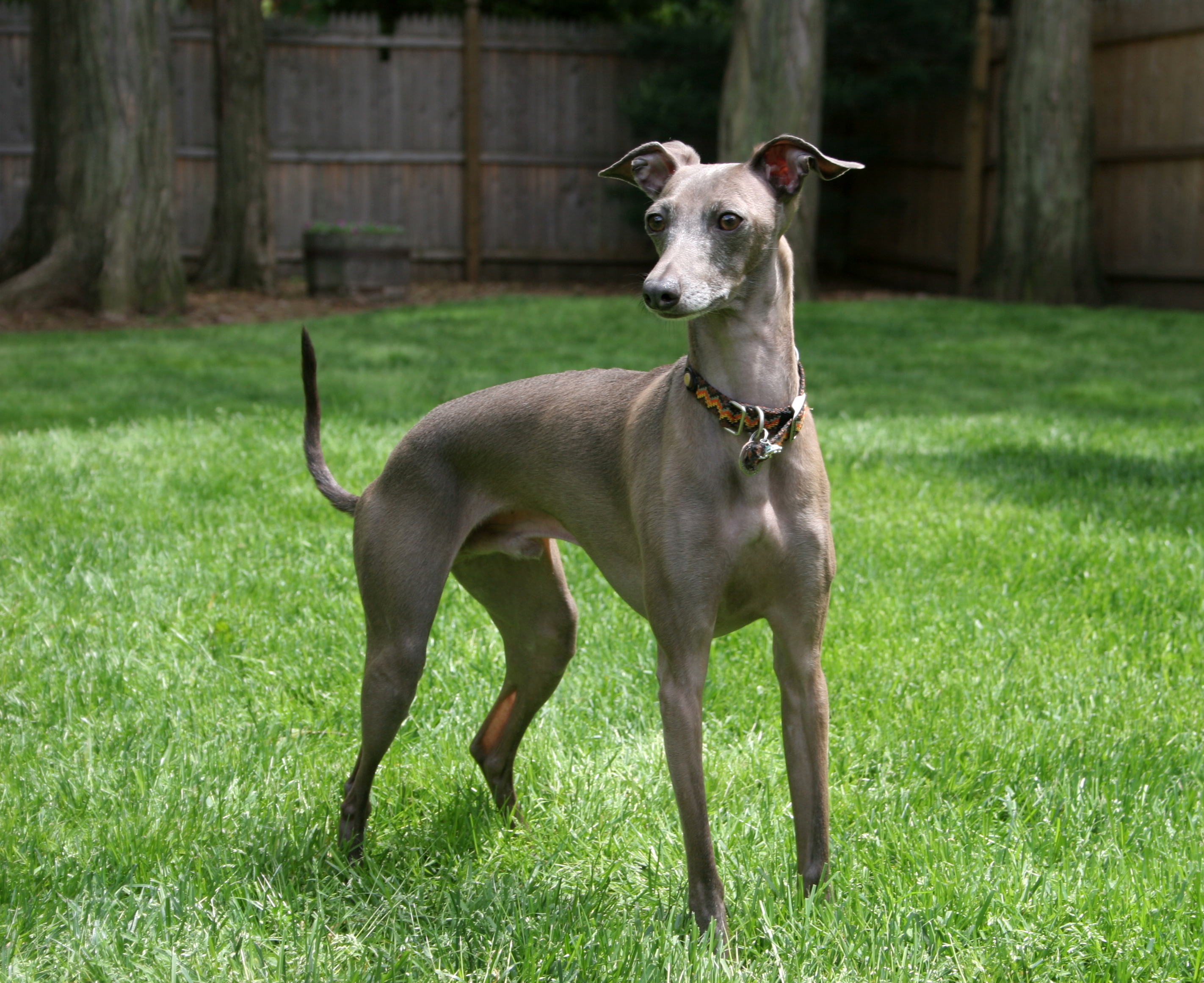

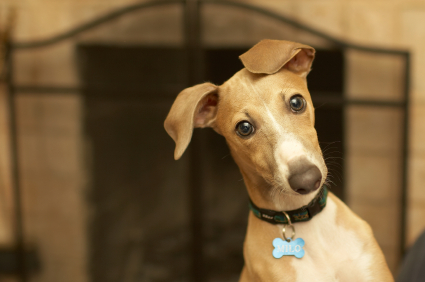
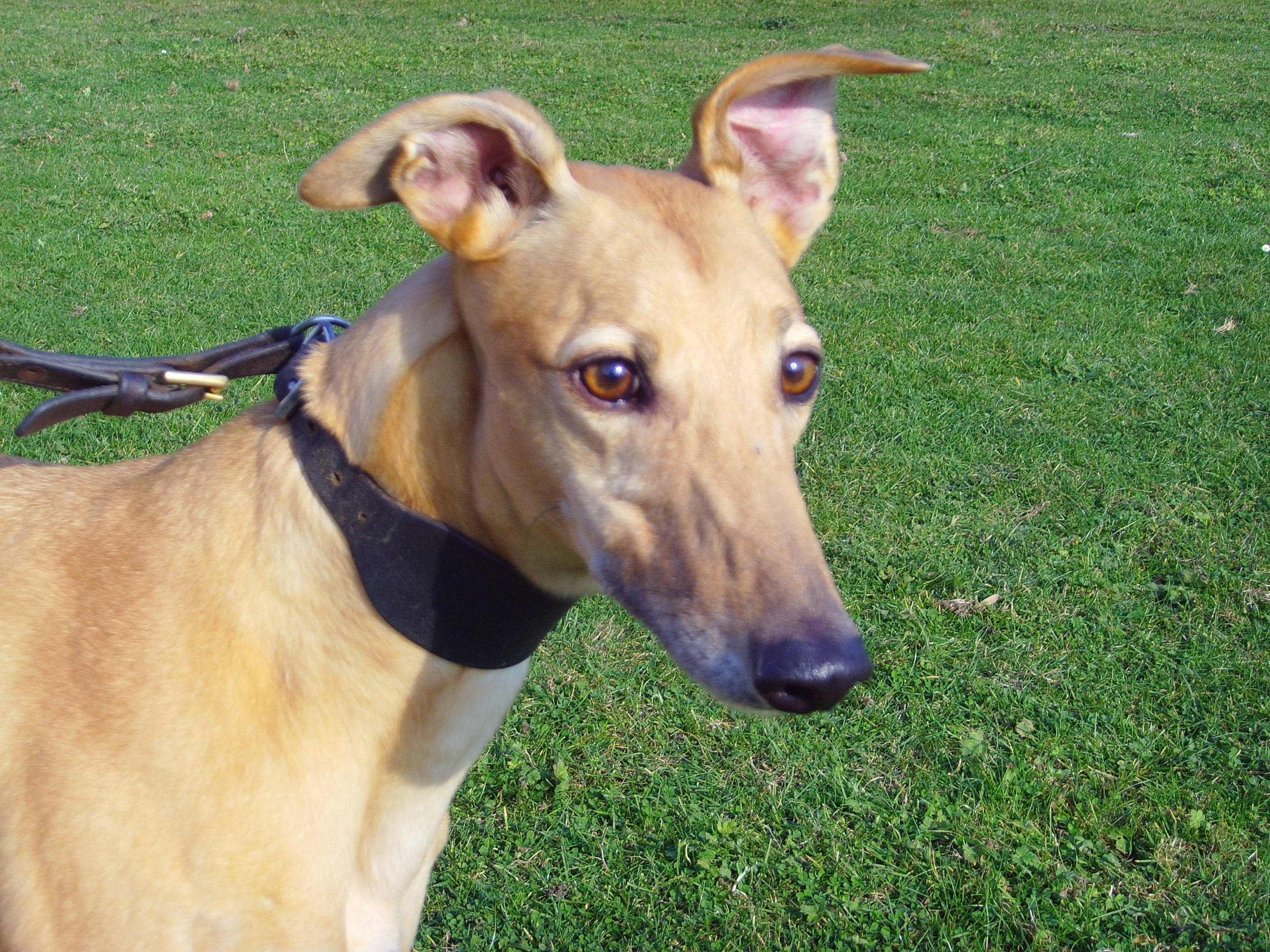


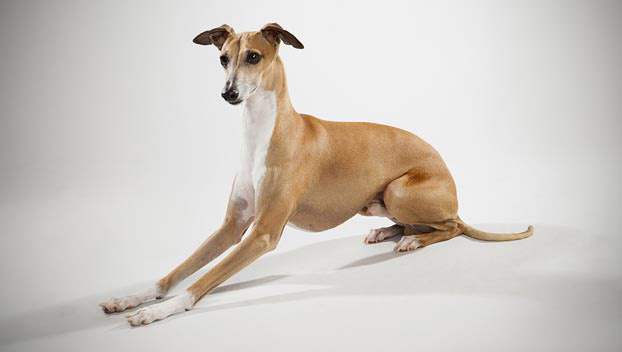
 Animalia Life
Animalia Life